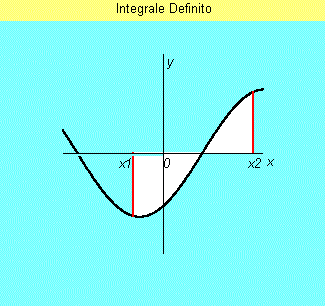
The described process for trapezoid area calculation concerns a real case. Moreover it is fit for be extended to wider and more abstract problems resolution. Particularly we can take off the restriction for the function to be anywhere positive in the interval. In this case as well it's possible to subdivide (x1-x2) interval in n identical parts Dx and then carry out the same remarks we made for trapezoid area calculation. There's a theorem, in this case too, that proves, for continuous functions in (x1-x2), two series sn and Sn be convergent at the same number.